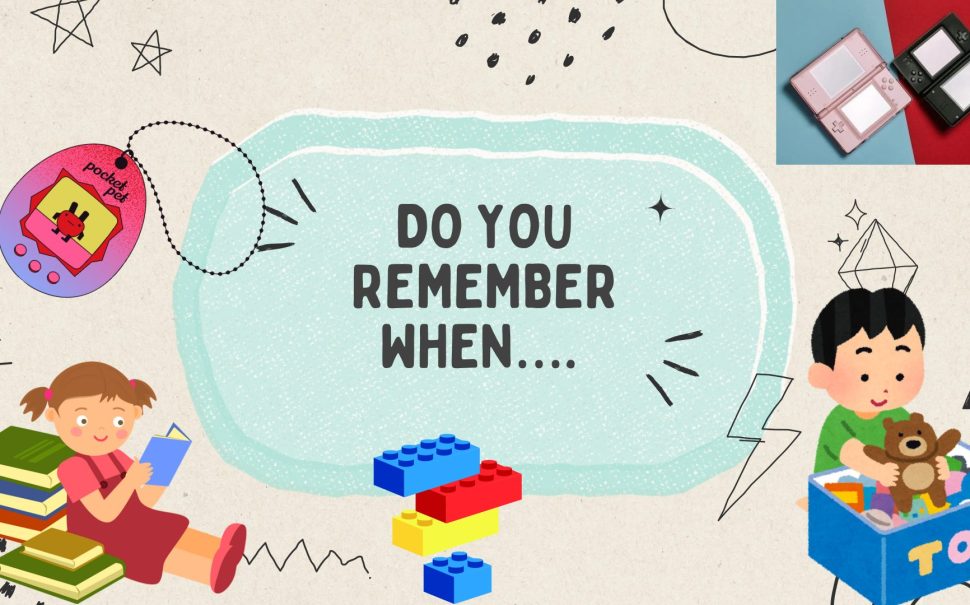Walk into Tk Maxx and you might think you have stumbled into a 90s and early 2000s time warp.
I recently visited and I was transported back to a time when life was simpler, and my biggest concern was keeping my Tamagotchi alive or believing collecting Beanie Babies would make me a millionaire one day.
Picture this: you’re wandering through the aisles of TK Maxx, hunting for Christmas gifts, and suddenly there they are (with a much heftier price tag) — Tamagotchis and Beanie Babies.
Now, these childhood icons are back, and they’re not just for kids anymore.
But why do we keep falling for these blasts from the past? What is it about toys from our childhood that makes grown adults rush to the tills like kids on Christmas morning?
Tamagotchis and Beanie Babies have reappeared in 2024 Christmas stock due to a surge in demand driven by nostalgia.
The latest data from Circana, a leading advisor on the complexity of consumer behaviour, reveals that toy sales in the UK dipped slightly in 2024 but ‘kidults’ drove a record-breaking £1 billion in sales over the past year, contributing nearly one-third of total toy spending, up £57 million from 2023.
The biggest growth categories include building sets, plush toys, collectible cards and stickers – appealing across all age groups.
Collectibles are particularly noteworthy, representing 23% of toy sales by volume, with an average price of £6.92, making them popular for both pocket money and adult impulse purchases.
You might be wondering: what does nostalgia have to do with holiday shopping? And why are some Mancunians particularly drawn to the comfort of childhood memories through toys this festive season?
Kev Fleming is a lifelong toy collector and 15-year owner of Manic Minors Toystore in Warrington.
This year, Manic Minors was named Warrington’s Best Independent Business.
“I’ve been a kid that never grew up,” he says. “I look in the mirror, see a man with a progressively grey beard, and think, ‘Oh damn, I forgot I looked like that,’ then carry on being a kid.” For Fleming, toys are more than objects – they’re vessels of joy, helping adults reconnect with their inner child.

The pandemic amplified this nostalgia. As people sorted through old possessions, they rediscovered long-lost treasures, and a collective yearning for simpler times emerged.
This desire to reclaim childhood joy mirrors a broader societal need for comfort and familiarity.
According to Fleming, the emotional significance is clear: “Most people don’t start as collectors. They begin as adults reclaiming a happy moment lost when they gave up their toys to fit in.”
Why the rush to relive our playtime days? Fleming believes it’s rooted in that pivotal moment when childhood innocence was traded for teenage social status.
“We swapped action figures for acceptance,” he explains. “Now, as adults, we’re rewinding the clock to fight villains and save the day – just like Optimus Prime.
“Sports fans can watch their heroes in a stadium, but pop culture fans can’t see a courageous leader like Optimus Prime walk around as a robot (yet)!”

This surge in nostalgia-driven purchases is most evident with iconic toys from key childhood milestones. Think of the frenzy over Buzz Lightyear in the ‘90s or Cabbage Patch Kids in the ‘80s.
“Finding ‘that’ toy freezes time,” Fleming says. “And before you know it, there’s a corner of your house dedicated to good mental health and internet checklists!”
But it’s not just about the toys – it is about the memories tied to them. “Customers recall sacrifices their parents made to get that one special toy or flashbacks to tearing open presents around the Christmas tree,” Fleming shares.
The emotional pull isn’t limited to older generations. Younger audiences, who never grew up with these toys, are jumping on the nostalgia train.
From high-ticket LEGO sets to reboots like Ghostbusters, brands are banking on “kidults” with disposable income. “Companies are now chasing adult wallets as digital-age children bond less with tangible items,” Fleming notes.
Even Star Wars, once the undisputed leader of the collectors’ market, now shares the spotlight with rarer toylines. “It’s lovely watching people make new friends over a shared passion for toys,” he adds.
Fleming’s advice? Collect what brings you joy. Don’t treat your childhood toys like a stock portfolio, and stick to your budget.
Oh, and a pro tip from the savvy collectors – keep those receipts out of sight from the family!




